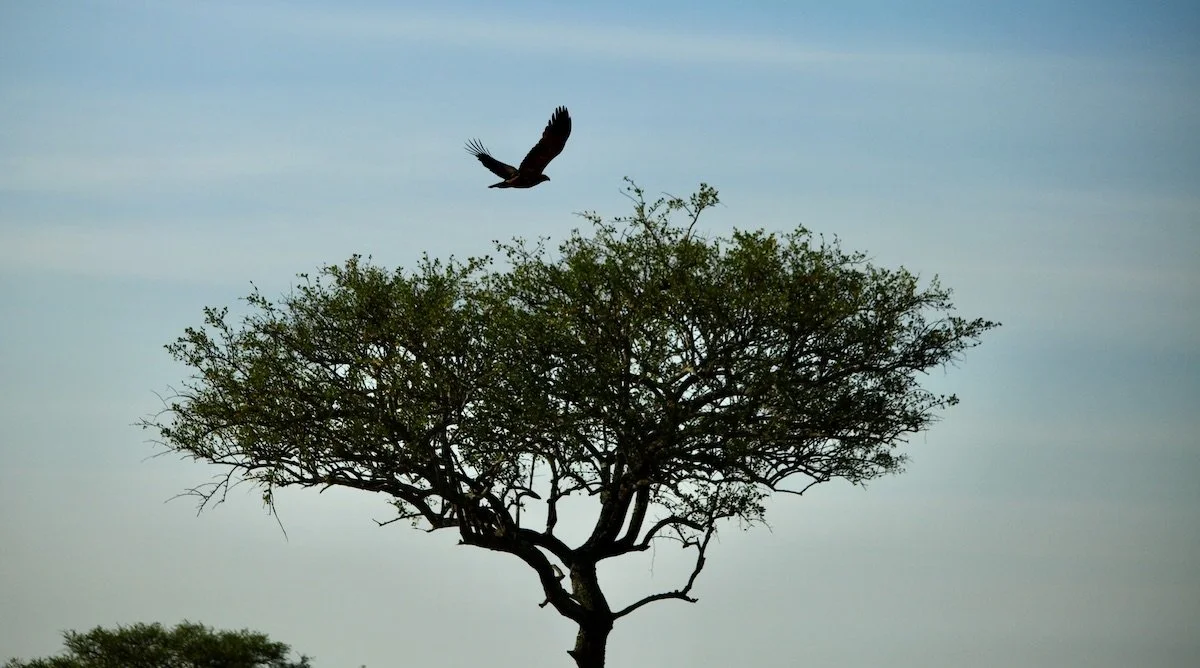Death Eaters
“This great feeding body is the world.”
Like us, vultures rely on death for sustenance. It’s uncomfortable for us humans to acknowledge this in ourselves, but vultures are perfectly comfortable waiting for Death to show himself. Vultures will sit on a branch - or a railing, as I recently discovered, shoulders hunched, beady eyes watching for signs of life, or rather, signs of impending or recent death.
When we see vultures riding the air in lazy loops, we know as they do that Death is nearby. Their eyesight is exact: they can see a corpse from far away. Their sense of smell is acute. For vultures, Death’s stench is alluring. For them, the putrid scent of a rotting carcass smells like an apple pie freshly baked, cooling on the counter. In this case, the counter is a wide plain, generous with its heat as the warm air sets thermals in motion - the ring road of the sky that vultures ride meal to meal.
When vultures settle down to eat, they bathe in the perfume of their carrion feast, and later, they splash their urine on it. Their strong stomach acid and pungent urine kill bacteria. Their bare heads and necks keep the rest of their feathers blood-free as they feed. We humans aren’t nearly so intimate with the onward journey of the dead. We shy from the grisly unraveling of physical bodies, especially our own.
On the ground, a group of vultures is called a committee. In flight, they’re a kettle. When feeding, a wake. Many farmers wrongly believe that vultures attack healthy animals, so they poison the vultures. Because of unfounded human fear, many species of vultures are now endangered.
One of the vultures’ favorite buffets is the wildebeest migration of East Africa. For 2.5 million years, they have made the same epic commute, following rain and lush grasses, in a loop that takes them from the Serengeti Plain in Tanzania to Kenya’s Masai Mara and back again. On days when the wildebeests pass through nature preserves or national parks, safari trucks crowd close, overflowing with humans starving for spectacle. Vehicles bristle with long lenses poised to capture the moment.
Many wildebeests die along the way. Some perish from hunger or thirst. Some drown crossing rivers that brim with crocodiles. Wildebeests are uneasy swimmers. Their smooth hooves and spindly legs were made for the savannah. They fling themselves into the water, frantic for dry ground as they scramble and snort, jostling each other. The young must fend for themselves; their mothers cannot help them. The vultures edge closer and wait.
I think of the wildebeest mothers who enter the water with their young and emerge without them, and wonder what those losses do to the broken-hearted, broken-familied herd. I remember a story of women fleeing violence at dusk, frantically trying to cross a swiftly flowing river swollen with rain. One of the women was heavily pregnant. Struggling against the current, exertion and panic sent her into labor and she gave birth as she stumbled and swam. The river carried her newborn away.
I cannot tell anymore whether humans were made to make crossings under duress. We’re in such a crossing now. If we don’t make it, the rivers won’t be what kills us, because we already killed them first.
Earth warms and exhales. As vultures ride the sky together, their feathers create a current within a current that coheres around the traveling birds, a sort of swirling envelope of warm air. They depend on the eddies generated by the wings of the flock to know when to circle and when to descend. Each adjustment of head, tail and wings ripples through the group. Together, they sense changes as they glide, following the magnet of scent, waiting for the shift in the air that signals that the lead vulture has veered from the circle to begin his slow dive to the ground. Even when individuals cannot see the leader, the flock feels the change in air pressure. It used to be that clouds of vultures filled the sky. Now, their numbers are greatly diminished. Without their flock mates, the subtle signals that guide them are lost: sometimes flocks will starve even if there is plenty of food on the ground.
It's important for us to understand these things, to remember that, for vultures, Death’s abundance is an airborne dance of nuance and cooperation, and profusion has its purpose. Maybe if we understood this, it would help us appreciate that which repels us, and that which we fear: a skill we might want to hone during these times of violent revulsion.
This month, I have struggled with the stubborn fatigue that is one of Covid’s fierce gifts. Odd then, and slightly alarming, that last week, a turkey vulture landed on the railing of my deck, in the place I think of as the perch that belongs to the red-shouldered hawk. Maybe she shared a few tips with her bald-headed friends. Maybe people-watching is a form of avian entertainment. That day, she sat hunched on the railing, peering at me through the sliding glass door. I wondered if perhaps the vulture sensed something I wasn’t ready to admit to myself, about the ways we tempt Death with our refusal to rest. It’s because we’re hungry for what has been spoiled: we’ve acquired a taste for things and ways that do not and cannot nourish the flock.
